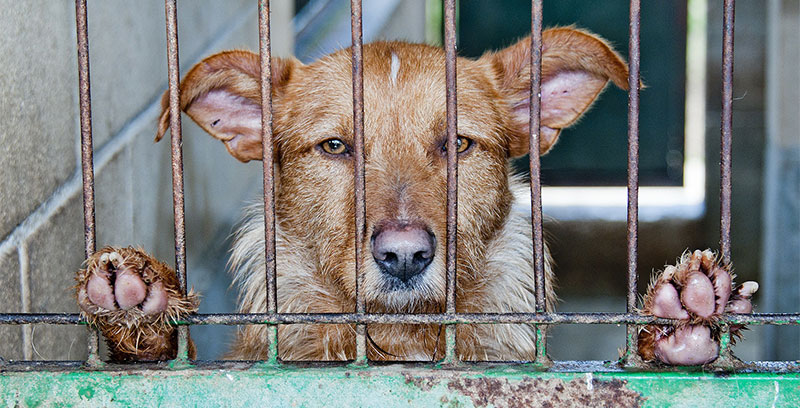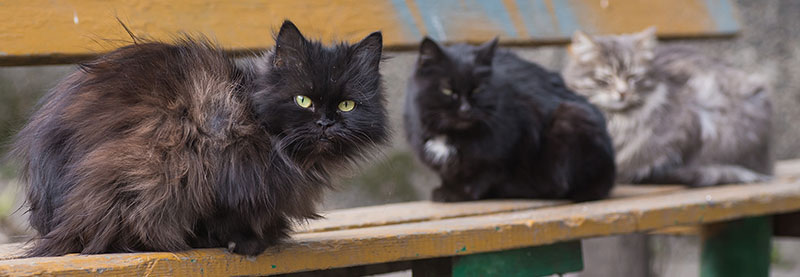Glossary of Terms

General Terminology
Another term for spay or neuter.
Ovariohysterectories/gonadectomies (spay/neuter surgery) for puppies and kittens eight to sixteen weeks of age. The American Veterinary Medical Association approved early spay/neuter in 1996, in an effort to stem the overpopulation problem of companion animals.
The sterilization of a cat or dog which would not have occurred without the help of a program's reduced rate or subsidy. For instance, a low-cost clinic which does 15,000 sterilizations each year may have really accomplished only 5,000 effective sterilizations if 10,000 of the animals would have been sterilized anyway, without its reduced rate or subsidy.
An animal whose ancestors on both sides have been members of a recognised breed, and usually officially registered as such.
"The act or practice of ending the life of an individual suffering from terminal illness or an incurable condition, as by lethal; injection or the suspension of extraordinary medical treatment." (American Heritage Dictionary, Fourth Edition).
Estrus ("heat") is the mating period of female animals. When estrus occurs, animals are said to be "in heat" or "in season."
Cats: Cats normally have their first estrous cycle between 4 and 6 months of age, with the average age around 5 months. The female cat has 2-4 estrous periods every year, each lasting 15-22 days. If she is bred, estrus seldom lasts more than 4 days.
If successful mating does not occur, estrus may last for 7-10 days and recur at 15- to 21-day intervals. It is possible for an unmated female to cycle every 3-4 weeks indefinitely.
Cats also have an estrous period 1-6 weeks after giving birth, so a female may be nursing one litter while pregnant with another.
Behavior Since there is usually no obvious vaginal discharge or swelling of the genitals during estrus in cats, as is seen in dogs, behavioral changes are the only obvious signs that your cat is in estrus.
A cat in estrus often carries her tail to one side, keeps her hindquarters elevated and seems unusually affectionate. She will rolling on the floor and seems much more restless than usual. The cat's voice seems more piercing than usual and she may "call" for 1-2 days before she accepts the male.
Dogs: Estrus or Heat cycle - The average heat cycle for a dog is approximately 3 weeks (21 days) and since this is an average, some heats are shorter (as little as 7-10 days), others are longer (4 weeks or more).
Average times between heat periods is seven months but some dogs can cycle as early as every 4 months, some once a year. Lengths of heat cycles and intervals between cycles are different for each dog but most dogs hit somewhere close to the averages.
Physical Symptoms: Include bleeding from the vulva, swelling of the vulva, possible increase in urination and the most noticeable, male dogs hanging around the house.
The next cycle usually begins about 7 months from the start of the last heat cycle, not the end of that cycle but again this varies from dog to dog. The interval stays the same even if she becomes pregnant.
Cats: Cats normally have their first estrous cycle between 4 and 6 months of age, with the average age around 5 months. The female cat has 2-4 estrous periods every year, each lasting 15-22 days. If she is bred, estrus seldom lasts more than 4 days.
If successful mating does not occur, estrus may last for 7-10 days and recur at 15- to 21-day intervals. It is possible for an unmated female to cycle every 3-4 weeks indefinitely.
Cats also have an estrous period 1-6 weeks after giving birth, so a female may be nursing one litter while pregnant with another.
Behavior Since there is usually no obvious vaginal discharge or swelling of the genitals during estrus in cats, as is seen in dogs, behavioral changes are the only obvious signs that your cat is in estrus.
A cat in estrus often carries her tail to one side, keeps her hindquarters elevated and seems unusually affectionate. She will rolling on the floor and seems much more restless than usual. The cat's voice seems more piercing than usual and she may "call" for 1-2 days before she accepts the male.
Dogs: Estrus or Heat cycle - The average heat cycle for a dog is approximately 3 weeks (21 days) and since this is an average, some heats are shorter (as little as 7-10 days), others are longer (4 weeks or more).
Average times between heat periods is seven months but some dogs can cycle as early as every 4 months, some once a year. Lengths of heat cycles and intervals between cycles are different for each dog but most dogs hit somewhere close to the averages.
Physical Symptoms: Include bleeding from the vulva, swelling of the vulva, possible increase in urination and the most noticeable, male dogs hanging around the house.
The next cycle usually begins about 7 months from the start of the last heat cycle, not the end of that cycle but again this varies from dog to dog. The interval stays the same even if she becomes pregnant.
Another term is castration.In this surgery the doctor makes an incision in front of the scrotum and through that incision accesses each testicle. The fibrous coverings of the testicles are incised and each testicle is removed after securely ligating the blood vessels that attach to each testicle. The benefits of having a dog and cat neutered are well documented. And to simply do a vasectomy to render the male sterile would not alleviate the scent marking, desire to breed, territorial defense and other testosterone driven behaviors. Even in guard dogs and hunting dogs, many owners report improved behavior and manageability when the dog has been neutered.
The term means pus in the uterus. Any time a veterinarian is presented with a dog or cat suffering from pyometra the condition is considered serious and immediate surgery is nearly always indicated.
The medical term is ovariohysterectomy. In this major abdominal surgery the pet's ovaries and uterus are removed. There is no evidence that a pet suffers from any personality or emotional harm by having their ovaries removed. The uterus is also removed to insure that it does not become a source of infection over a period of time. If the surgeon simply tied or obstructed the Fallopian tubes (the channel where the eggs must pass into the uterus) in order to make the female dog or cat sterile, she would still come into heat, attract males, and attempt to breed. Experience has shown that the best procedure is to perform a complete ovariohysterectomy.



